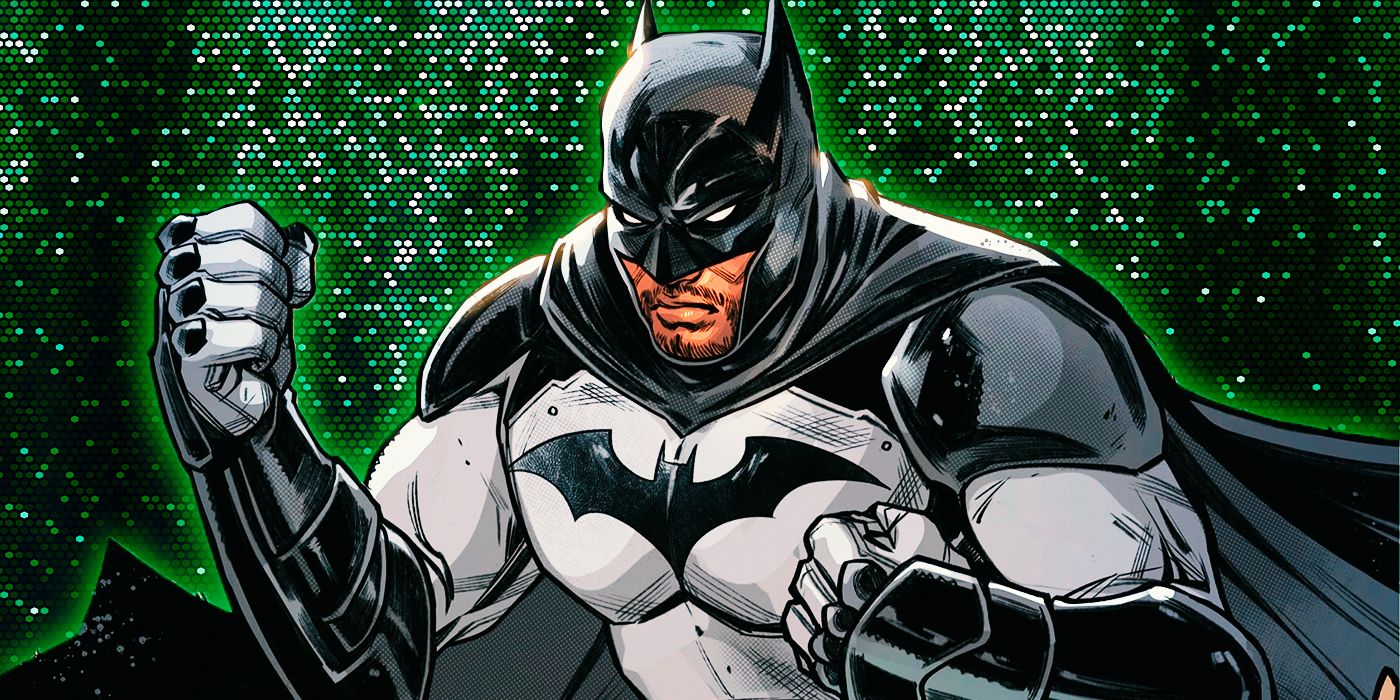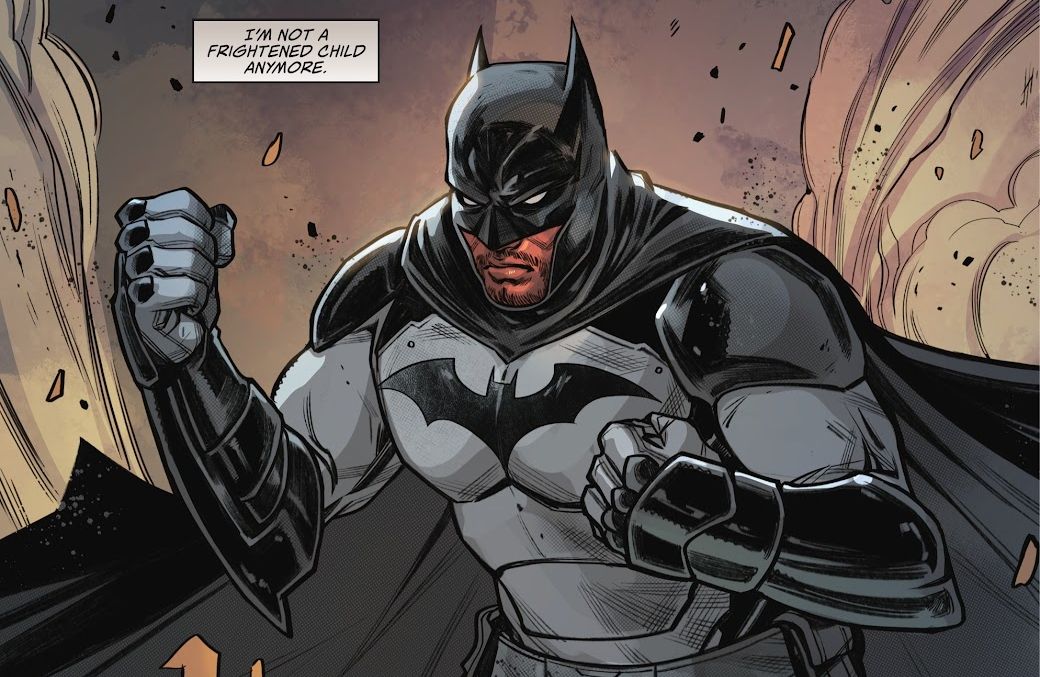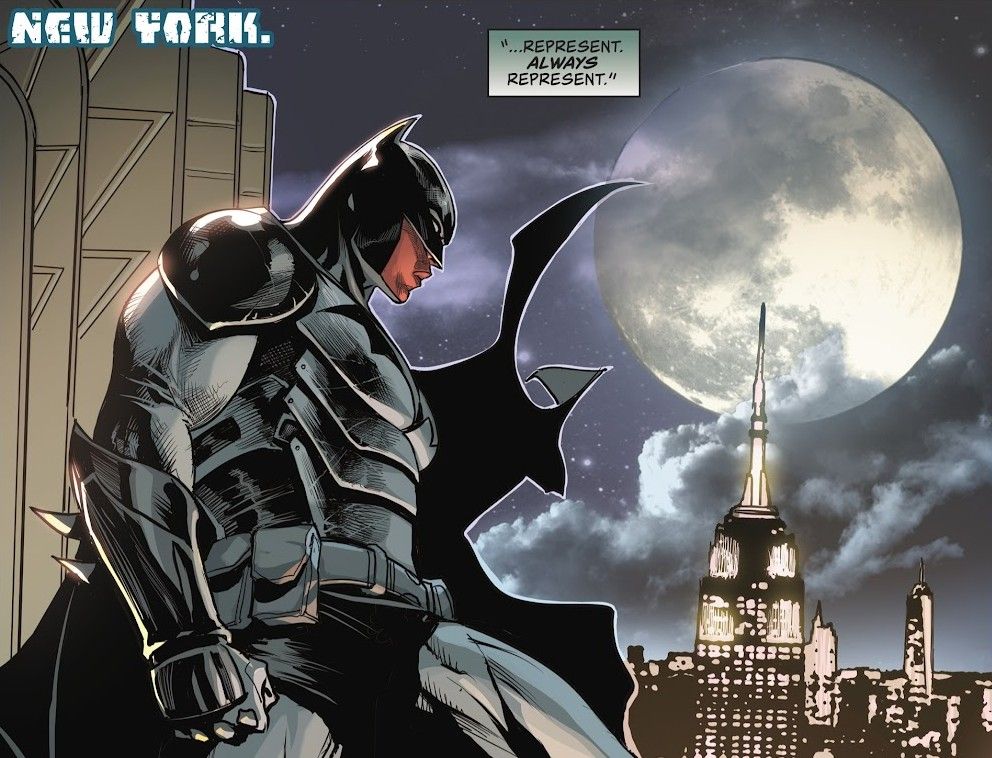Warning: The following contains spoilers from I Am Batman #5, on sale now from DC Comics.
The biggest challenge for DC's newest Batman, Jace Fox, has been proving he can step out of the shadows cast by others. While many have stepped into the role of Batman before (including Dick Grayson, Jean-Paul Valley, and even Commissioner Gordon), they each largely served as temporary placeholders for Bruce Wayne. Similar to John Stewart's introduction in 1972 as a placeholder for Hal Jordan in the Green Lantern series, there exists the expectation that anyone who takes up an iconic mantle won't last for long within the role. Like Stewart (who struggled for years with his identity as a superhero in the shadow of Hal Jordan), some might have expected the same of DC's new Batman. However, I Am Batman #5 (by John Ridley, Christian Duce, Juan Ferreyra, Laura Braga, Rex Lokus and Troy Peteri) proves that Jace Fox is unwilling to simply lie down and accept the role of temporary substitute.
The Other History of the DC Universe, a DC Black Label series also written by Ridley, examines the storied history of the comic book universe through the eyes of those historically marginalized by society, painting a brutal but honest picture of many beloved superhero icons. In the first issue of the Eisner-nominated series (by Ridley, Giuseppe Camuncoli, Andrea Cucchi, José Villarrubia and Steve Wands) a particular spotlight is placed on John Stewart and the public's perception of him as a stand-in when the "real" Green Lantern, Hal Jordan, wasn't available. Even if this was not the intention of his creators at the time, it would be years before John Stewart would step from his predecessor's shadow. Perhaps part of Stewart's struggle was never being given a space that was his own from which to grow, always occupying the same role as Jordan in his appearances.
Knowing the DC Universe's history as well as he does, Ridley moves to separate Jace from the space that Bruce's Batman once occupied, both physically and mentally. The end of I Am Batman #5 sees Jace deciding to move to New York with his mother and sister, Tam, as his sister begins a long and grueling process of physical therapy following her awakening from a coma.
Away from the confines of Gotham and its shadows, Jace seems set to distinguish himself in the iconic mantle in this new setting that will likely present him with new adversaries, new allies, and new chances to prove to both the world and himself that he is his own Batman. While most of Jace's story thus far has been a mission of self-discovery and self-acceptance, this new shift likely represents a turning point for this growing character who first stepped out on his own in 2021's Future State: The Next Batman, also written by Ridley.
Fundamentally, Jace's Batman fights for reasons that are altogether different from Bruce's, operating in an totalitarian Gotham that slinks further into dystopia. Here, in a city where capes are outlawed, he gives hope to the oppressed by fighting the powers that seek to control Gotham through violence and fear. In this burdened city, Jace is the Batman these powers fear. While Bruce fights for a kind of eternal vengeance, Jace fights for a kind of reformation, believing that those who turn to crime also deserve the chance to turn away from it.
Ridley has been careful with his building of Jace's character, acknowledging that he needs a space that is his own, with a voice and motivation that makes him unique from the most recognizable bearer of the Bat-Mantle. While John Stewart really didn't get that chance until years later, Jace is proving to audiences that this Batman is his. This Batman refuses to be a stand-in or replacement and is in no way inferior to the other Dark Knight, instead striving to become a titanic icon on his own.



